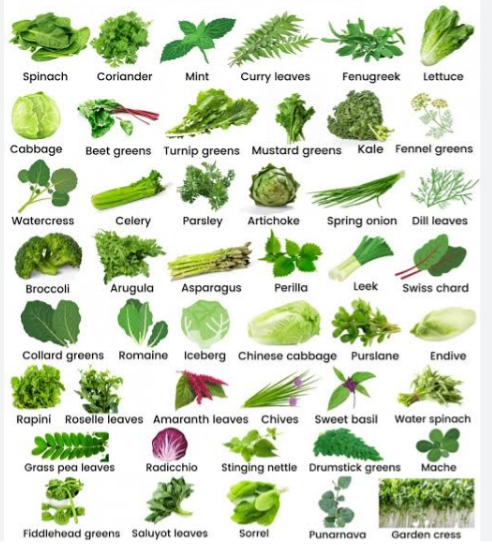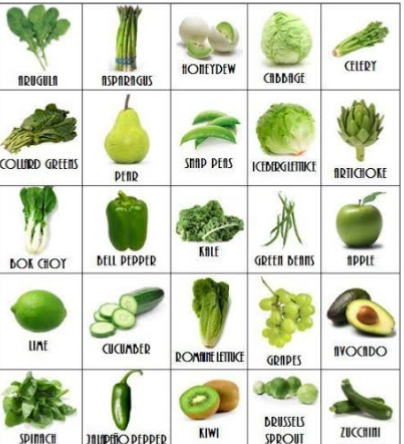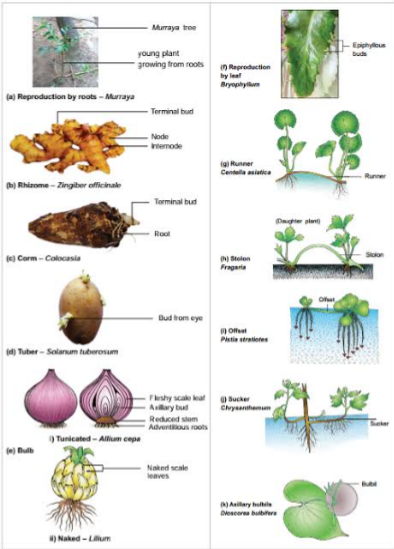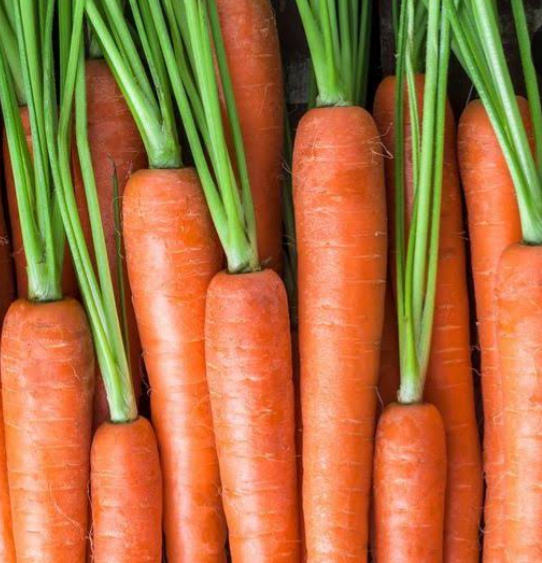
Lots of nutritional related health problems have risen drastically globally due to low vegetable intake by human especially those living in developing and underdeveloped countries. Most of these countries produce vegetables but not in sufficient quantity to meet the needs of the populace. Most people in these countries lack the knowledge of the health benefit of vegetables in the diet of human, lack of technology, postharvest, storage facilities, and processing are some of the problems faced by these nations.
vegetables are the fresh edible portions of certain herbaceous plants—roots, stems, leaves, flowers, fruit, or seeds. Vegetables can also be defined as the edible, fresh, non toxic succulent plant parts that can be eaten raw or cooked with meat or fish or other preparation. These plant parts are either eaten fresh or cooked in a number of ways. They may be eaten in a variety of ways as part of main meals or as snack food.
They are mostly food materials or plant materials apart from seeds. Most fresh vegetables are low in calories with water content of about 70 percent, about 3.5 percent protein and less than 1 percent fat. They are low in sodium and fat content. Vegetables are good sources of minerals, especially calcium and iron, and vitamins. They contain water soluble vitamins like vitamin B and vitamin C, fat-soluble vitamins, like vitamin A and vitamin D. They are also rich in dietary fibre and antioxidants.
The branch of horticulture involved in vegetable production is called called olericulture
CLASSIFICATION OF VEGETABLES
Vegetables can be classified based on
A. the part of the plant that is used for food.
B. Life cycle
C. Scientific or botanical name
D. Origin or tolerable climate
CLASSIFICATION BASED ON PART OF THE PLANT USED FOR FOOD
1. The root vegetables: this include beets, carrots, radishes, sweet potatoes, and turnips.
2. Stem vegetables : This include asparagus and kohlrabi.
3. Leafy vegetables : The leaf and leafstalk vegetables include brussels sprouts, cabbage, celery, lettuce, rhubarb, and spinach.
4. Bulb vegetables : This include garlic, leeks, and onions.
5. Head, or flower, vegetables : This include artichokes, broccoli, and cauliflower.
6. Fruits vegetables : This include cucumbers, eggplant, okra, sweet corn, squash, peppers, and tomatoes.
7. Seed vegetables : include legumes, such as peas and cowpea.

fruit vegetables differ from fruits because of their taste. For example, Tomatoes are fruit vegetables and not fruit.
CLASSIFICATION BASED ON LIFE CYCLE
1. Annual vegetables : These are vegetables that complete their life cycle within one year. Examples include, Corchorus, tomatoes etc
2. Biennial or pluri seasonal: These are vegetables planted in a year and harvested the following year. For example, India spinach, chilli,
3. Perennial vegetables: These are vegetables that remain on the field for many years. For example, Vernonia amygdalina (bitter leaf)
4. Ephemeral: These are vegetables that complete two or more life cycles within a year. For example, Amaranthus spp, Celosia Argentina, Talinum triangulare( water leaf).
CLASSIFICATION BASED ON SCIENTIFIC NAME OR BOTANICAL NAME
This is the linneaeus or binomial classification which is used as name for each plants all over the world. Each country and tribes with the country has local names for each plant. But the scientific name is a general name used all over the world. Two names are given to the plants. The first is the generic name and the second is the specific name. The first alphabet in the generic name must be written in capital letter, while others and the specific name should be in small letters. Both names must be underlined separately if written, but when typed, the must be italisized. At times, the variety names are included for more specification to make three names. The third name is preceeded by “var”. For example
Cabbage: Brassica oleracea var. capitata
Bitter leaf: Vernonia amygdalina
CLASSIFICATION OF VEGETABLES BASED ON ORIGIN OR TOLERABLE CLIMATE
In the past, Crops perform best in their original climate or where they originate from. But today, crops can grow and produce better under different climate out of their original climate. This is due to advancement in science and technology, improvement in soil condition and health etc. Vegetables are then classified into
1. Cole vegetables : These are temperate specific vegetables. They perform better in temperate or cold regions. Examples include cabbage, cauliflower etc
2. Warm climate vegetables : These are vegetables that perform better in tropical or warm regions. They include Okra, Corchorus, Celosia, etc.
VEGETABLES PROPAGATION
vegetables can be grown subsistently on small-scale or produced commercially for large scale production. They can also be grown conventionally or using organic farming methods. Most vegetables are planted by seeding in the fields , or raised in a nursery or greenhouse and transplanted as seedlings to the field. For example, lettuce.
There are two methods of propagating vegetables: Sexual propagation or by seed and Asexual or vegetative propagation.
1. SEXUAL VEGETABLE PROPAGATION
This is the sowing of vegetable seeds directly on field or indirectly raised in nurseries. Sowing of vegetable seeds may be by drilling, dibbing or by broadcasting. Drilling and dibbing are commonly used for bigger sized seeds. Although, smaller sized seeds can also be planted using the two sowing methods. Smaller sized seeds can be broadcasted. At times, farmers mix fine sands, ash, or soldust with the seeds to maintain even spread of the seeds when broadcasting.
Seeds can be sown directly on the field, on flat, on ridges, mounds, sunking or raised beds.
Indirect sowing of seeds is usually carried out in nurseries. Nursery beds are made or planting trays are used to germinate the seeds after which they are transplanted to the field at recommended spacing. This is used for vegetables like tomatoes, lettuce, carrots etc Germinating the seeds in nurseries help protect the veges from adverse weather condition, damage by pest, give proper care such as regular watering, weeding, spraying of pesticides and early application of fertilizers are carried out etc.
ADVANTAGES OF DIRECT SOWING OF VEGIES
1. Less energy is needed for planting
2. No special skill is needed
3. Cost of production is low
4. It saves time
5. Can be practiced by both peasant and commercial farmers
DISADVANTAGES OF DIRECT SOWING OF VEGIES
1. Broadcasted seeds can be picked by birds
2. Seeds can be wasted since more seeds are planted per drill, and broadcast
3. Early pest and disease control can be difficult especially when the seedlings are crowded
4. Adverse weather condition like heavy rainfall can wash away broadcasted seeds
INDIRECT SOWING OF VEGETABLES
This is the sowing of the veges in the nursery before transplanting them to the field. These vegetables are given proper care. The nursery can be green house nursery, Bareroot nurseries, Containerized nurseries, and Field nurseries etc. Proper nursery management are carried out on the germinating vegetable seedlings.
Before transplanting of vegetable seedlings, proper land preparation must be carried out on the field two weeks before transplanting.
ASEXUAL OR VEGETATIVE PROPAGATION OF VEGETABLES

This is the propagation of plant without the use of seeds. Plant parts such as stems, leaves, roots, bulb, bulbils, corms, sucker, buds etc are propagules used for propagation. Vegetables such as water leaf, sweet potatoes, tomatoes, potato (Solanum tuberosum) can be grown through this means.
Some examples of veges and their propagules used for propagation.
a) bulb: onion ( Allium sepa) and garlic
b) Rhizome: Ginger (Zingiber officinale) and tumeric
c) Roots: water leaf (Talinum triangulea) etc
ADVANTAGES OF VEGETATIVE PROPAGATION
1. The propagules are cheap to procure
2. Propagules sprout quickly and develop faster
3. Propagules multiply with ease. Therefore lots of planting material can be sourced
4. Genetic qualities of parent plants are easily transfered to their offsprings. Therefore, resistant varieties gene are also in offspring.
5. Uniformity in sprouting
DISADVANTAGES OF VEGETATIVE PROPAGATION OF VEGIES
1. Propagules are difficult to store
2. Propagules required on large field may be bulky to transport
3. Pest and diseases can easily distroy propagules.
BENEFITS OF VEGETABLES

The nutrient content of different types of vegetables varies considerably from one another.
Several researches had been conducted and documented on the many health benefits of vegetables to human. Such studies found that eating vegetables result in
1. decreased risk of heart disease because of their low fat content
2. vegetables are low in calories but high in fiber, they could help keep body weight under control.
3.Increasing your fiber intake through vegetables may reduce risk of cancer.
4. vegetables with high fiber content do slow the absorption of sugar, which can keep blood sugar levels steady.
5. an increase in vegetable intake can lead to a reduction in the development of diabetes
6. Longevity studies have shown that people who consume more of vegetables, looks younger, fresher in their old age and live longer.
7. They contain phytochemicals which are antioxidants that provide health benefits to the cardiovascular system and immune system.
8. It aid digestion of food
9 they are sources of vitamin A and C and minerals
10. It halp in neutralisation of concentrated acids contained in some food materials. etc.
SOCIO-ECONOMIC IMPORTANCE OF VEGETABLES
1. Good source of income to farmers
2. Important in research
3. Used as mulching and water conservation
4. Provision of employment
5. Medicinal uses etc.
SOME VEGETABLES AND THEIR SCIENTIFIC NAMES
Amaranthus ( Amaranthus can datum)
Armenian cucumber (Cucumis melo)
Arugula ( Eruca sativa)
Asparagus ( Asparagus officinalis)
Beetroot (Beta vulgaris subsp. vulgaris)
Bitter leaf. (Vernonia amygdelina)
Broccoli ( Brassica oleracea)
Brussels sprout (Brassica oleracea)
Cabbage (Brassica oleracea var. Capitata)
Carrot. (Daucus carota)
Catsear (Hypochaeris radicata)
Cauliflower (Brassica oleracea var. Botrytis)
Cayenne pepper (Capsicum frutescens)
Celery (Apium graveolens)
Celosia ( Celosia agentea)
Ceylon spinach (Basella alba)
Chayote (Sechium edule)
Chicory (Cichorium intybus)
Chile pepper (Capsicum annuum)
Chinese Mallow (Malva verticillata)
Chrysanthemum (Chrysanthemum coronarium)
Corchorus ( Corchorus olitorius, Corchorus capsularis)
Corn salad (Valerianella locusta)
Dandelion (Taraxacum officinale)
Eggplant or Aubergine ( Solanum melongena)
Fat hen (Chenopodium album)
Fluted pumpkin (Telfairia occidentalis)
Garlic ( Allium sativum)
Ginger (Zingiber officinale)
Kale (Brassica oleracea var Acephala)
Iceplant (Mesembryanthemum crystallinum)
Lagos bologi (Talinum fruticosum)
Land cress (Barbarea verna)
Lettuce. (Lectuca sativa)
Lizard’s tail (Houttuynia cordata)
Malabar gourd (Cucurbita ficifolia)
Marrow ( Cucurbita pepo)
Melon. ( Citrullus lanatus)
Mustard (Sinapis alba)
New Zealand Spinach (Tetragonia tetragonioides)
Okra (Abelmoscus esculentus)
Onion ( Allium cepa)
Orache (Atriplex hortensis)
Pea (Pisum sativum)
Pumpkin (Cucurbita maxima)
Radish (Raphanus sativus)
Radicchio. (Cichorium intybus)
Rapini (Brassica rapa var. ruvo)
Samphire (Crithmum maritimum)
Salad rape (Brassica napus)
Sea beet (Beta vulgaris)
Seakale (Crambe maritime)
Snake gourd (Trichosanthes cucumerina)
Sorrel (Rumex acetosa)
Spinach (Spinacia oleracea)
Summer purslane (Portulaca oleracea)
Sweet pepper (Capsicum annuum)
Swiss chard ( Beta vulgaris var. flavescens)
Tomato. (Lycopersicum esculentum)
Watercress (Nasturtium officinale)
Water spinach ( Ipomoea aquatica)
Winter purslane (Claytonia perfoliata)
